Day 3 of a four day Spring Tour in Norfolk. The wind had dropped today and it was a gloriously bright and sunny day, with just enough high hazy cloud at times and light breeze to stop it getting too hot. We spent the day down in the Broads.
It was a long drive down to Hickling Broad, but as we got out of the minibus in the car park the bushes were alive with birds singing. Walking out from the car park, a Blackcap was singing above our heads and then we stopped to admire a Willow Warbler singing in the top of a tree. We could hear a Cuckoo but way off in the distance.
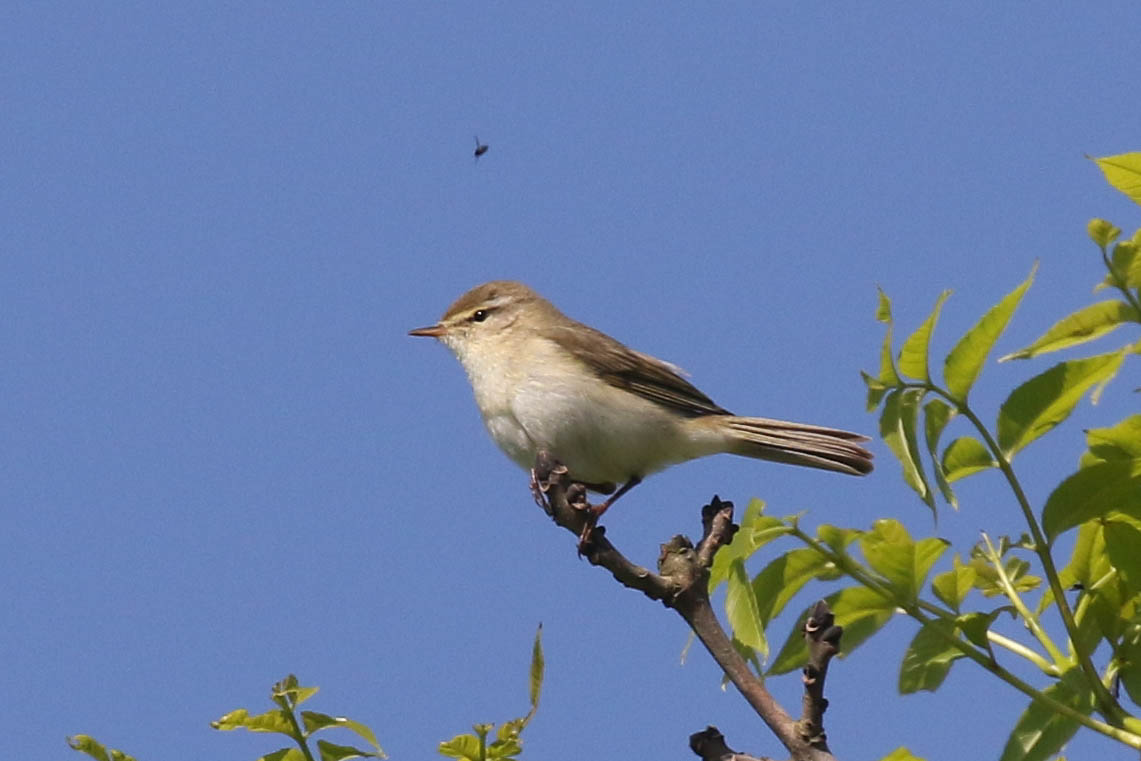
We turned onto Whiteslea track and walked up towards the viewing mound. As we passed the wood, a couple of Four-spotted Chaser dragonflies were hawking for insects around the trees and one perched nicely on the reeds in the ditch by the path.
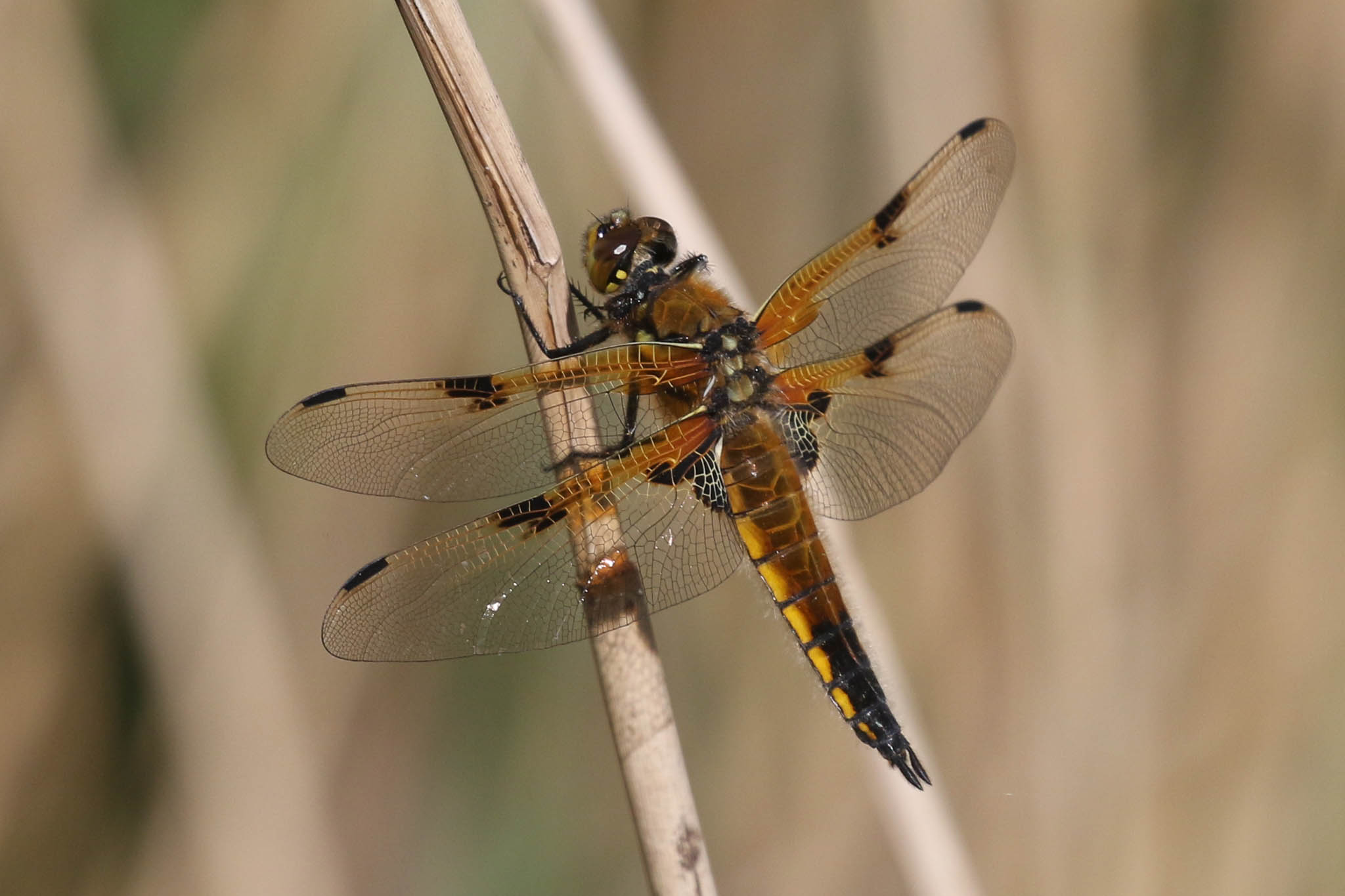
Scanning Brendan’s Marsh from up on the viewing mound, the first bird we saw was a very smart summer plumage Bar-tailed Godwit, very rusty underneath with the colour extending from the head right down to underneath the tail. There were really good numbers of Ringed Plover and Dunlin here too, though mostly asleep, and a Greenshank just behind the line of reeds in the next pool.
A Common Crane came up out of the reeds, and circled round in front of the dead trees. It never gained much height though, and quickly dropped down again out of view.

One of the wardens stopped to catch up and told us where the Temminck’s Stints had been earlier, viewed from over the other side of the marsh. So we walked back to the corner and turned down along the track towards Stubb Mill.
From up on the platform we could see the two Temminck’s Stints. They were close in, on the nearest sandy spit, but partly obscured behind the reeds. Still we had a good view of them in the scope. One of the scarcer spring passage waders here, this is the peak time so it was good to catch up with a couple.
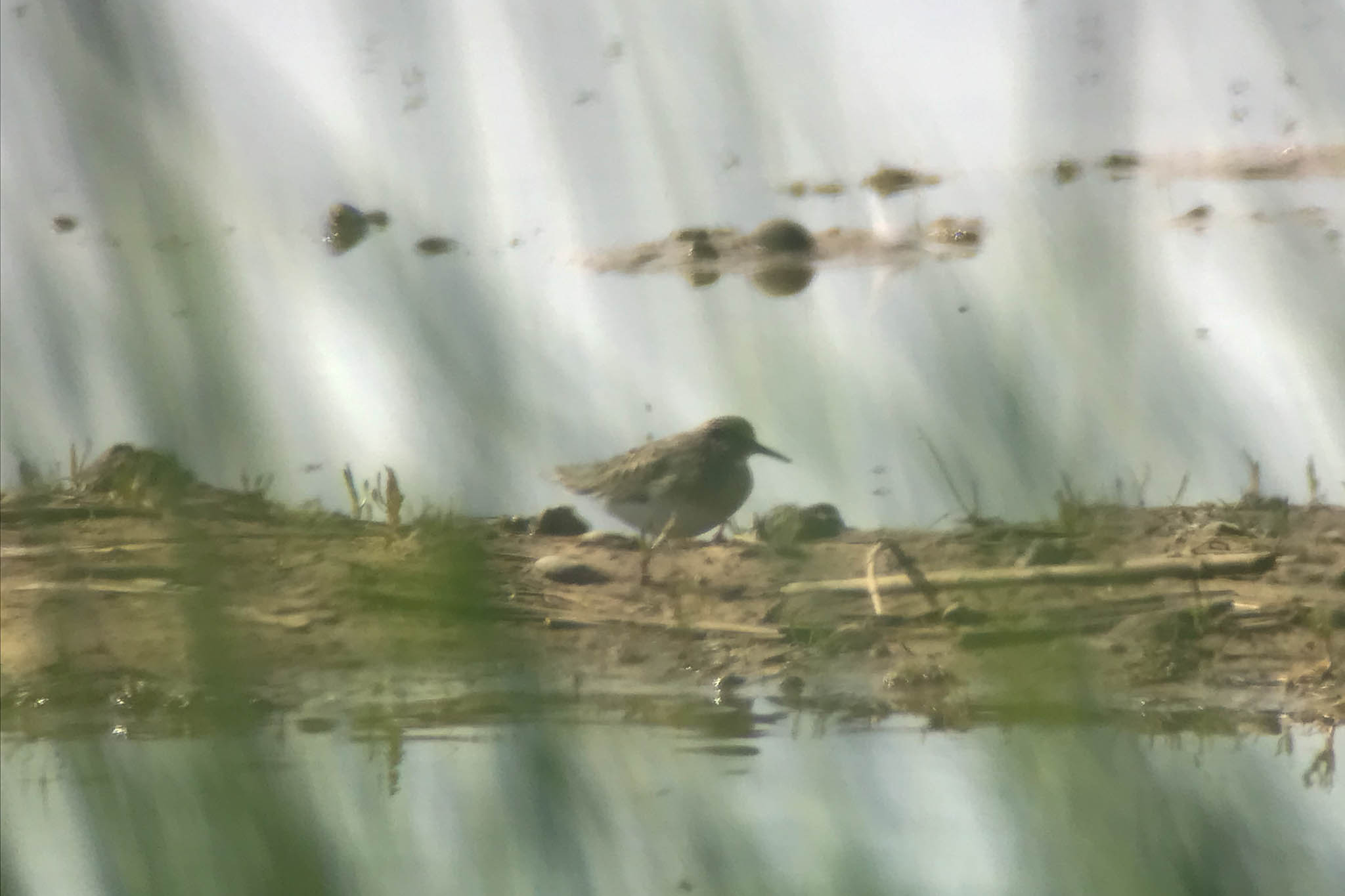
A Common Sandpiper was nearby too. There is only space for two people on the platform, so we took it in turns. But there were more people waiting to come up now, so we descended and scanned the marsh from the path below. We could see a Greenshank now in front of the reeds at the back and a very smart Spotted Redshank dropped in, looking its absolute best now in its jet black breeding plumage with silvery spotting.
Walking on, we scanned the next field on the other side of the track and quickly located the male Ring Ouzel on top of a straw bale on the corner of the hedge. We had a look at it in the scope and then it dropped down to feed in and out of the long grass around the base of the trees. Most of the Ring Ouzels which pass through in the spring have gone north already but there are often one or two stragglers, so another nice bird to catch up with here.
We carried on to the far end and up onto the bank. The Black-winged Stilts had been here but there was no sign of them now. Scanning around the marsh we did see another Greenshank and a single Common Snipe feeding in the vegetation. The Spotted Redshank flew past us calling and disappeared off east towards the coast.
Eventually a couple of Black-winged Stilts came up out of the reeds, circled round calling and dropped back in out of view again. A good start, but we really wanted to see one on the ground. While we waited to see if they would come out, we walked up a little further to look at a Wood Sandpiper on another smaller pool. We had a nice view in the scope, but we were distracted then.
First a Bittern came up in the distance, back towards the Whiteslea track. It flew up high and towards us, but rather than dropping in quickly it flew high all the way across the reeds and over the dead trees, before turning and heading out towards Horsey Mere. It brought up another Bittern from the reeds below it and the first turned back, back past the dead trees before finally dropping down. An unusually long flight for a Bittern here at this time of year, but speaking to the warden it seems to be a bird which is wandering widely around the Broad (it has a distinctive feather missing in its left wing).
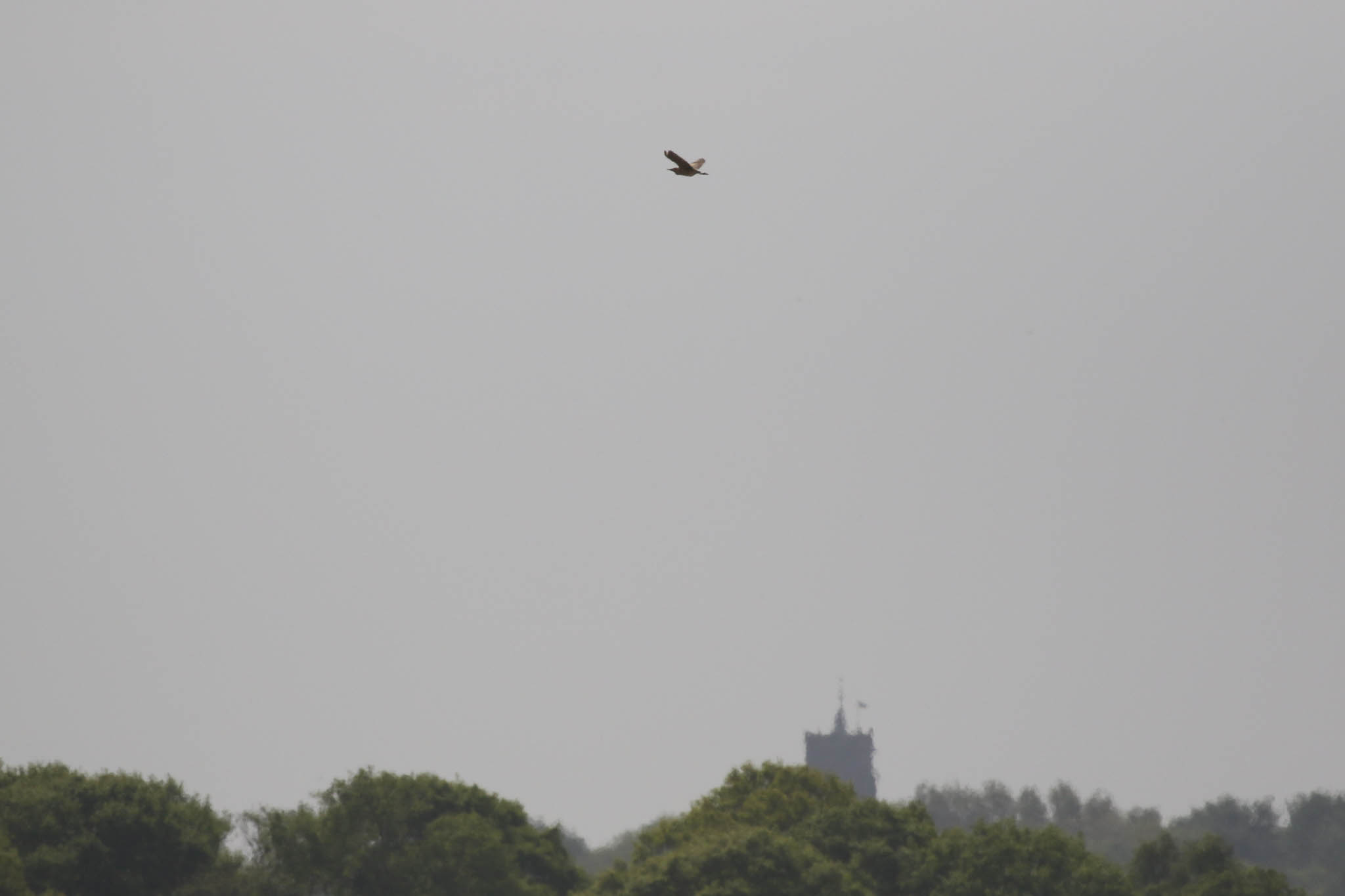
While we were watching the Bittern, the first Hobby of the day appeared, and flew low across over the reeds the other way. And the Stilts came up again at the same time and dropped down towards the scrape. We didn’t know which way to look! Unfortunately the Stilts flew straight back into the reeds again.
We stood for a while and watched, hoping the Stilts would come back again. Another Crane came up over the reeds behind us. There were a couple of Hobbys up now up, and one drifted high overhead. Two Common Buzzards circled up over the trees. The second Bittern was booming from the reeds now, presumably stirred into action by the interloper flying over.
By the time we turned our attention back to the Wood Sandpiper, it had disappeared in all the excitement earlier, before everyone had seen it. We walked back to the viewing platform, where there were meant to be a couple of others. A male Marsh Harrier circled over the path ahead of us. The Ring Ouzel was now out in the middle of the field, next to a Stock Dove, but there was more heat haze now.

Before we got back to the platform, we spotted a Black-winged Stilt now sat down on a sandy spit out on the marsh. We got it in the scope, a female with a mostly white head and browner back. It was spooked by a Dunlin, and stood up, showing off its extremely long pink legs. It stood and preened for a second or two, then flew over and landed much closer, right behind bank. There was no one on the platform now, so we had a great view of it from up there.
A Wood Sandpiper emerged from the dense clump of rushes in the middle of the marsh now and while we were watching it a second Wood Sandpiper appeared nearby. Everyone managed a nice view in the scope this time, without any distractions!
As we made our way back, there were several Azure Damselflies and Blue-tailed Damselflies around the bushes and more Four-spotted Chasers. A Grey-patched Mining Bee landed on the path and several Flavous Nomad Bees buzzed around the gorse.
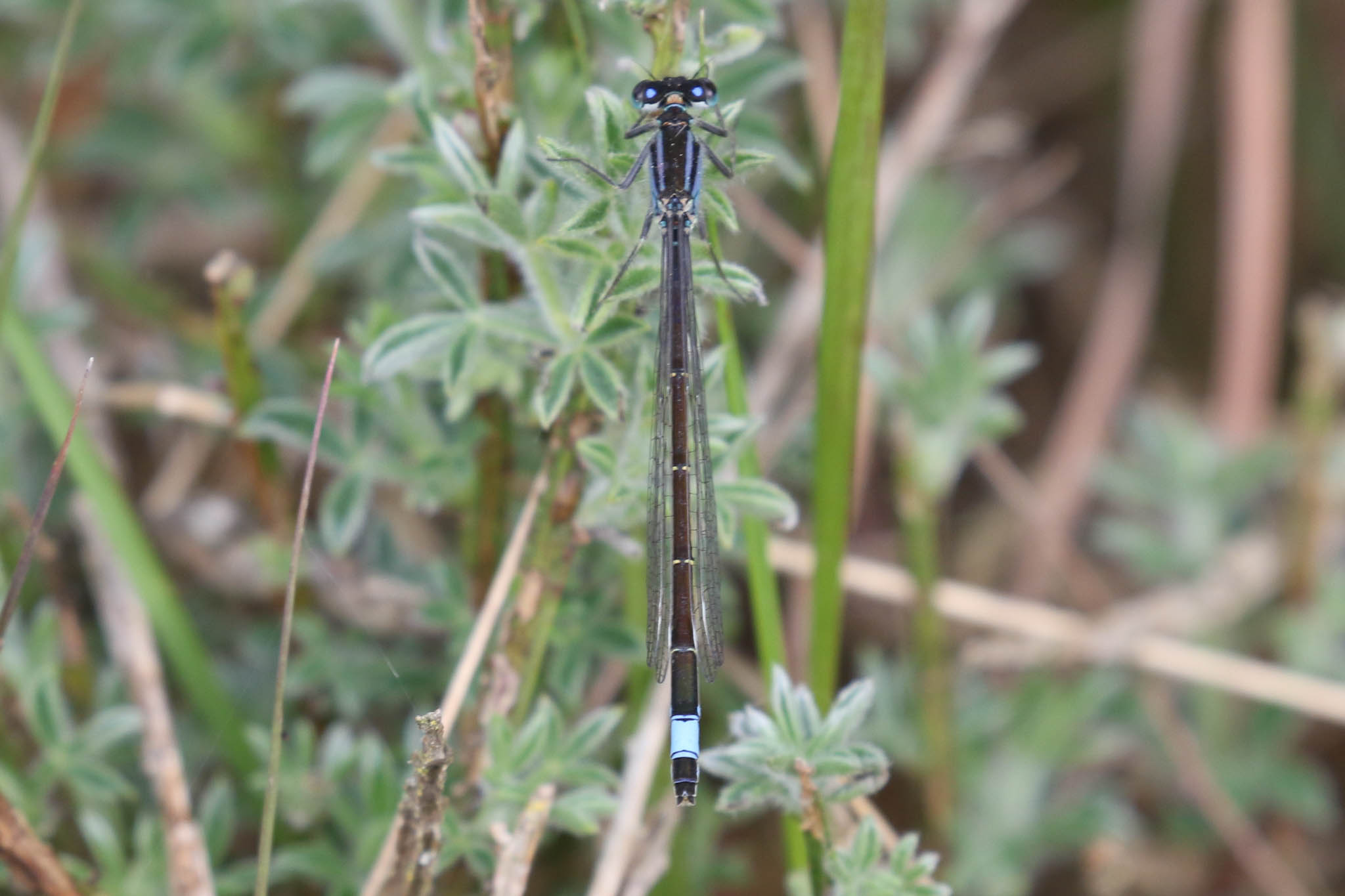
We had planned to walk back round to the mound on the Whiteslea track, as we had been told there was a Black-winged Stilt there, but we had already had good views of one now. However, one of the group had left a camera there earlier, so we went back round to look for it. We were glad we did!
There was a male Black-winged Stilt now further back, blacker and with a black patch on its head, where the female had been earlier in front of the viewing platform. Then we heard calling and looked over to see the female on a spit much closer. It took off and flew straight towards us, landing down on the edge of the water right in front of us and then proceeded to pick its way even closer. Great views!
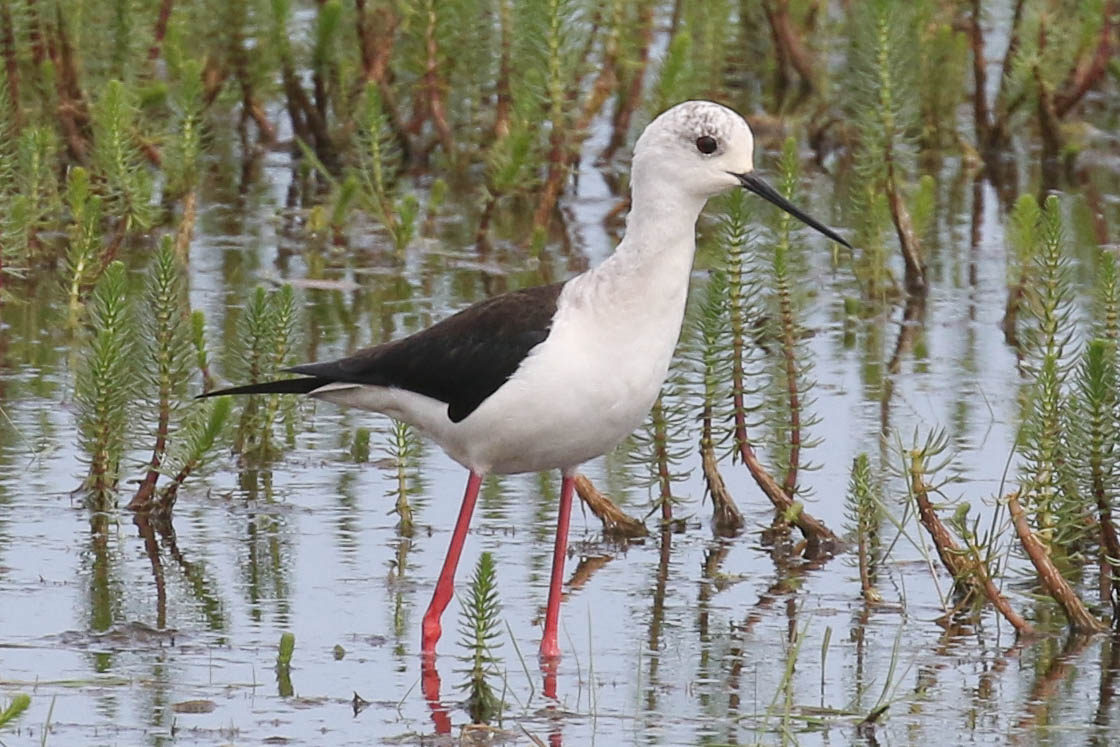
Six Common Cranes came up in the distance and flew round. A couple of Little Grebes swam across behind the line of reeds. Then it was time to head back for lunch. We cut back along the path through the wood. There were more Four-spotted Chasers here and a Small Copper butterfly landed on the path. A Common Whitethroat was singing in the top of a dead tree.
Almost back to the Visitor Centre, something flicked out of the oaks up in the canopy. A Spotted Flycatcher! It flew again and disappeared back deeper into the trees. A scarce bird here and presumably just a migrant stopping off. Unfortunately, not everyone saw it before it disappeared so we waited to see if it would come out again. There was no further sign, but we had nice views of a Treecreeper on the tree trunks.
We had lunch on the picnic tables in the sunshine, listening to Willow Warblers singing and with Cranes bugling in the distance. We had been thinking about going somewhere else this afternoon, but while we were eating someone walking back told us that there were several Swallowtails out by the Broad, showing very well. We decided to try for those next.
As we made our way round, we had a quick look at the Broad. A single Great Crested Grebe was out on the water, as well as lots of Mute Swans. A Hobby raced in over the Broad, and disappeared back the way we had come. Another circled high over the wood behind us. Along the path towards the Observatory, a couple of Green Tiger Beetles flew up from the path ahead of us.
We hadn’t gone too far before we saw a Swallowtail flying out over the reeds. It landed on a reed head, wings open, basking in the sunshine, but we were looking at it from behind and it was hard to get an angle to see it front on. A good start, but we knew they had been showing better than this earlier. We carried on to the Observatory and looked out over the Broad. There were a couple of Common Terns out over the water. We sat down in the cool for a rest and another Swallowtail flew past over the reeds.
We walked back the way we had come, hoping for a Swallowtail on the path and found some people watching one basking high on a sallow on the other side of the track from the reeds. It was a much better view now, with the sun behind us. Having only just emerged, the Swallowtails are absolutely fresh and pristine.
The Swallowtail then fluttered round and landed on a hawthorn bush right in front of us, only a metre or so off the ground, where it nectared on the flowers. Stunning! It kept flying up and round between us, gliding back in to the flowers, or up onto the sallow in the sunshine. It almost landed on someone’s head at one point! We stood and watched in awe.

The Swallowtails are out early this year and there are not many flowers out yet. The hawthorns are about the only things in flower, which is why they are nectaring on the bushes. Lucky for us, as it meant we were treated to such an amazing display. Eventually we had to tear ourselves away and walked back round towards the Visitor Centre. The first Swallowtail was still basking on the reeds as we passed.
We stopped to watch one of the Hobbys again, high over the scrapes, when it suddenly turned, folded its wings back and plummeted vertically, disappearing behind some trees. When it came up again it was eating a dragonfly. From a little further round, we could see the Hobby zooming back and forth repeatedly low over the scrape. It seemed to be doing well, catching a dragonfly on every pass. Great to watch.
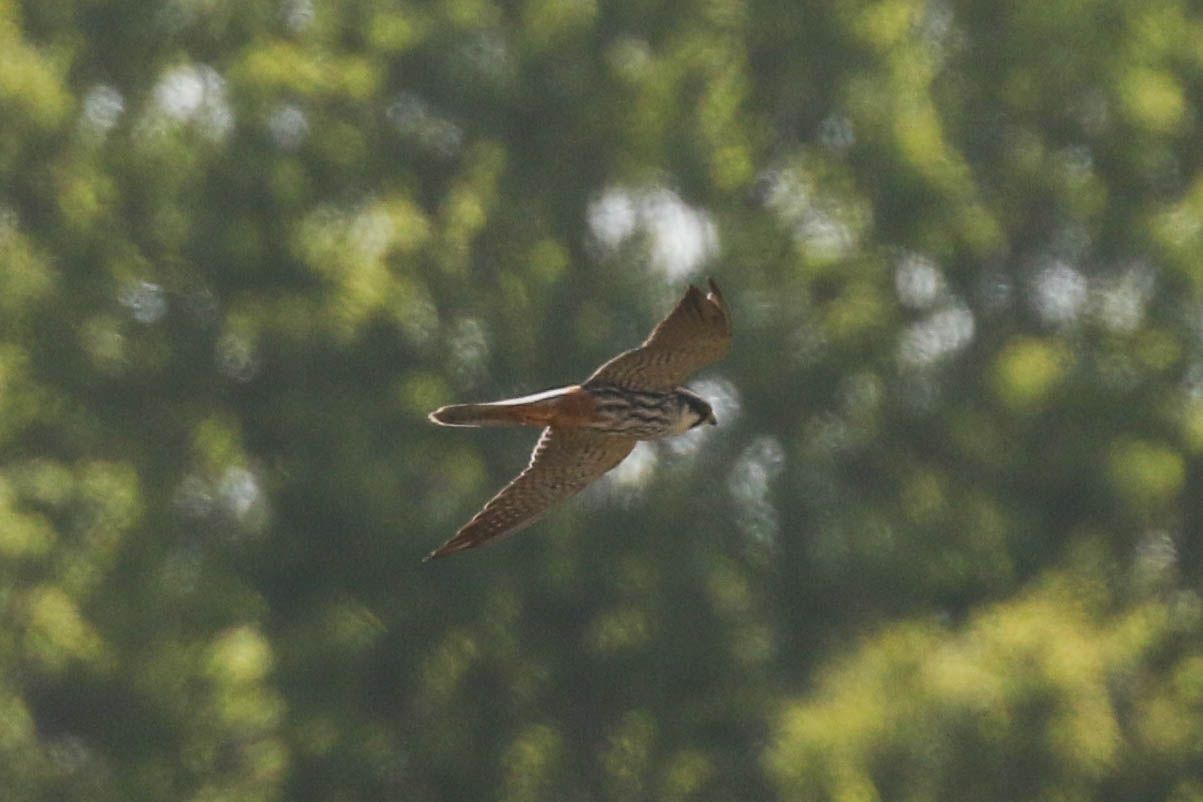
We had another quick look in the wood, but there was still no further sign of the Spotted Flycatcher. We had heard one calling earlier and we did now see a Great Spotted Woodpecker in the dead trees. Then it was back to the Visitor Centre for an ice cream before the long drive home.
Nightjar Evening
We met again in the evening. We hadn’t prearranged a Nightjar Evening for this tour, but the first Nightjars are back so by popular demand we headed out to see whether we might be able to find one.
As we drove out of the village, we noticed a shape on the roof of an old barn. Little Owl! We stopped and manoeuvred the minibus so everyone could get a look without disturbing it. It stared down at us disapprovingly, the went back to staring out at the fields across the road. These barns are in the process of being developed into houses – some of them are already being converted now – so it may only be a few more months before this Little Owl loses its home.

We drove over to one of the local heaths with a beautiful sunset in the sky to the west. As we walked out onto the heath, a couple of Roe Deer were feeding in the field next door and we flushed a Muntjac from the path which ran out past them.
We stopped to look at a female Stonechat, perched on the gorse alarm calling in the gathering gloom. We caught the back end of a Woodcock, unusually silent, disappearing off away from us.
We had only just got ourselves into position when the first Nightjar churred from the trees right behind us. It was obviously churring from where it was roosting, and there was no sign of it. It churred again and then called and we saw it fly up over the treetops hawking for insects. It came past us again, a male with white flashes in the wingtips, and then disappeared out over the heath.
Another Nightjar started churring further away, with possibly a third further off still. The first Nightjar then started up again, this time out in the middle of the heath. We were hoping it might come back in towards us but it stayed out in the middle of the heath for some time before it eventually did so – it came in low over the gorse, flashing its white wing flashes and up into the trees behind us. Unfortunately, it was too dark to see where it landed and it didn’t stay too long before it was off again.
It was lovely standing here on the heath listening to the Nightjars. The Woodcock reappeared a couple of times, flying over roding. A Tawny Owl hooted from the trees. It was getting dark now and we decided to call it a night. We had another day’s birding to look forward to tomorrow.
















